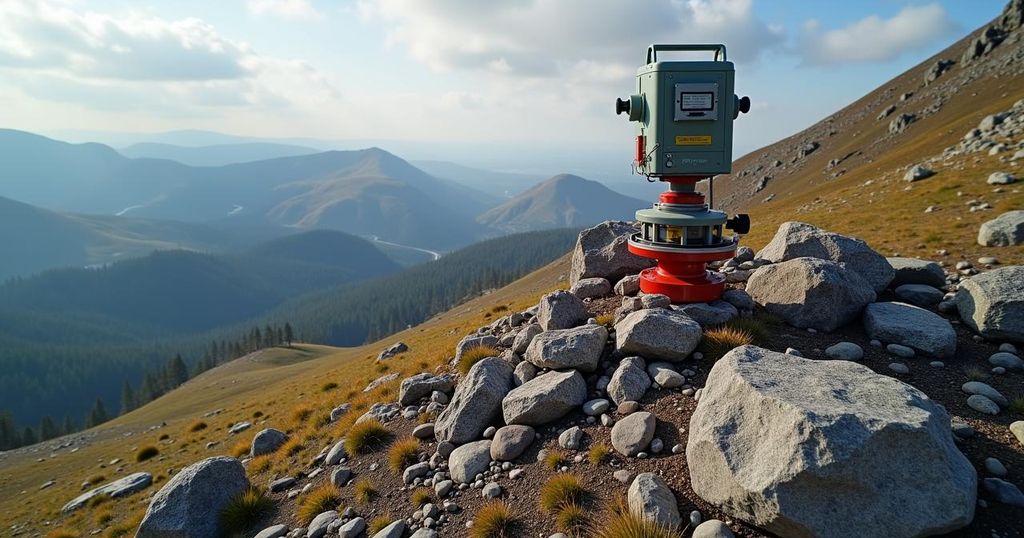Enhanced Monitoring at Mount Adams Following Unusual Earthquake Surge
Scientists are installing new monitoring sensors around Mount Adams in Washington due to an unusual increase in seismic activity, with six earthquakes recorded in September 2024—the highest monthly total since 1982. The current monitoring capability is limited, leading to the deployment of temporary sensors to improve data collection. Despite the increase in seismic events, there is no immediate cause for concern according to experts.
In a proactive response to an unprecedented rise in seismic activity, scientists have commenced the installation of new monitoring equipment around Mount Adams, the largest active volcano in Washington State. This increase in earthquake occurrences has prompted experts to enhance their capacity for observation and data collection. Historically, Mount Adams has experienced an earthquake roughly every two to three years. However, in September 2024 alone, a notable six earthquakes were recorded, representing the highest monthly frequency since monitoring efforts commenced in 1982. Given this unusual spike in seismic events, researchers are taking measures to gather more comprehensive data on the volcano’s activity. Currently, there exists only one permanent seismic monitor strategically located approximately six-and-a-half miles from the volcano. To facilitate improved observation, scientists are deploying several temporary sensors in the vicinity. These additional monitoring stations will enable the recording of seismic vibrations, thereby offering valuable insights into the geological phenomena taking place beneath the surface. Jon Major, Scientist-in-Charge at the United States Geological Survey (USGS) Cascades Volcano Observatory, articulated the challenges posed by the current monitoring setup: “Right now, there’s only one monitor within about six-and-a-half miles of the volcano. With only one monitor, it’s very hard to do really good locations. It’s really difficult to get accurate depth of the earthquakes.” Despite the marked increase in seismic activity, Major reassured the public that there is no immediate cause for alarm. He stated, “At the current time, there’s no cause for concern. We’re keeping what we call our alert-level status at ‘normal.’ There’s a good chance this is just background activity at the volcano.” Mount Adams, located in south-central Washington, approximately 30 miles north of the White Salmon-Hood River region, is classified as a “High Risk” volcano according to the USGS. While the recent surge in seismic activity is being carefully monitored, Major emphasized that there is currently no evidence to suggest any imminent eruption. As these new sensors are deployed, the scientific community anticipates gathering more detailed data, which will enhance the understanding and assessment of volcanic activity. The ongoing research aims to improve safety measures and preparedness for surrounding communities while continuously monitoring the geological behavior of this active volcano.
The article discusses the recent installation of additional monitoring sensors around Mount Adams in Washington State due to an unusual increase in seismic activity. Historically, this volcano experiences earthquakes infrequently, yet a record number of seismic events occurred in September 2024, prompting scientists to enhance monitoring efforts. The current geological observations are crucial for understanding the volcano’s behavior, given its classification as a “High Risk” volcano by the USGS. Experts aim to improve data collection and safety preparedness for nearby communities through enhanced monitoring.
In summary, the notable increase in seismic activity at Mount Adams has prompted scientists to deploy new monitoring equipment in the region. While this spike in earthquakes raises concerns, experts, including Jon Major from the USGS, assure the public that there is no immediate cause for alarm. The additional sensors will facilitate improved data collection, ultimately enhancing safety measures and community preparedness in light of the volcano’s high-risk classification.
Original Source: seattlemedium.com




Post Comment